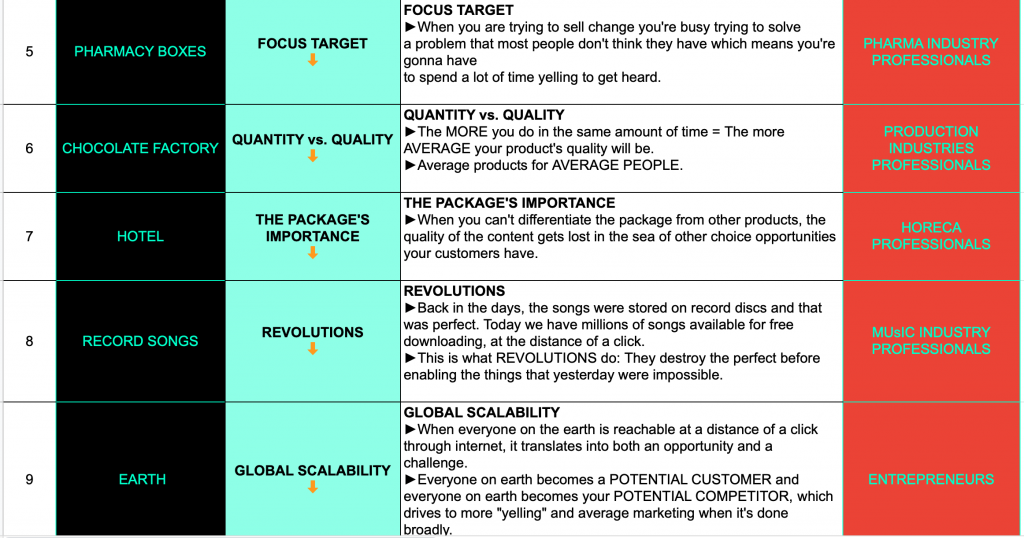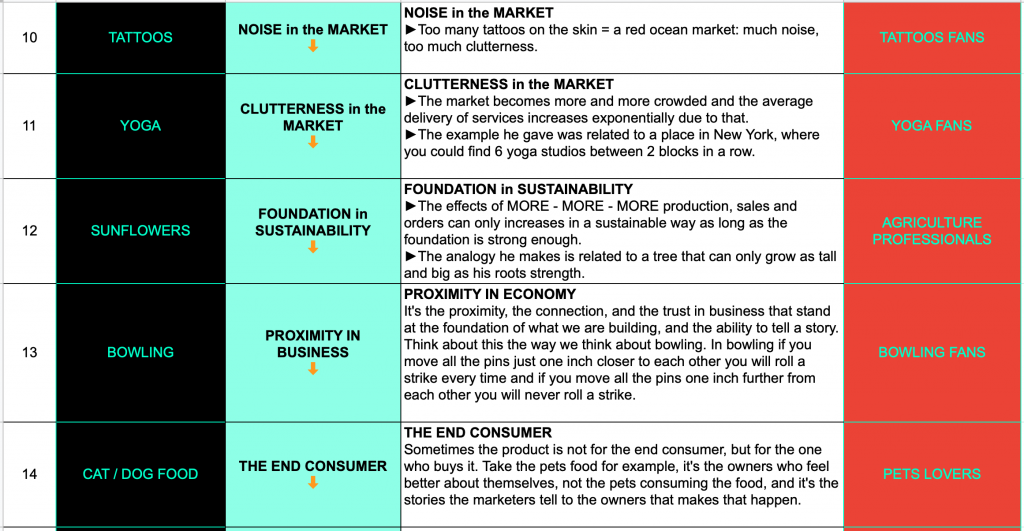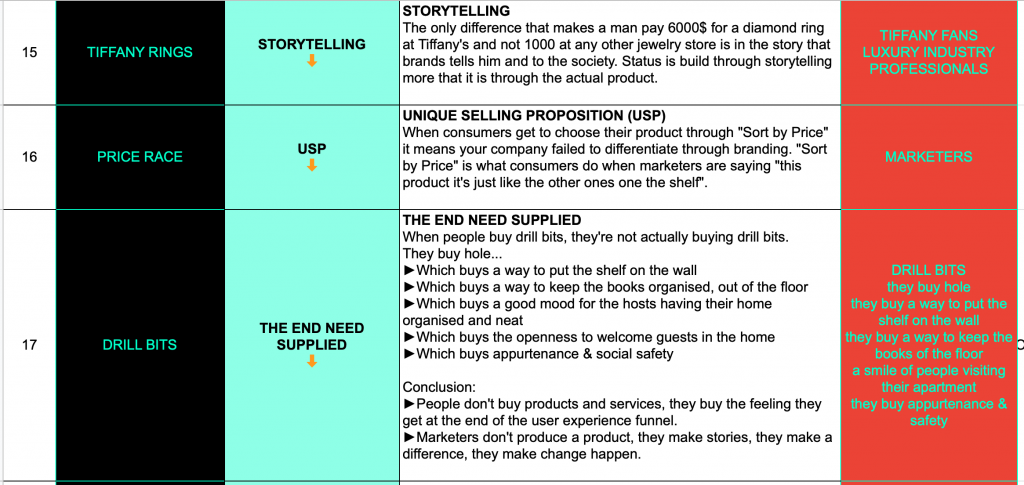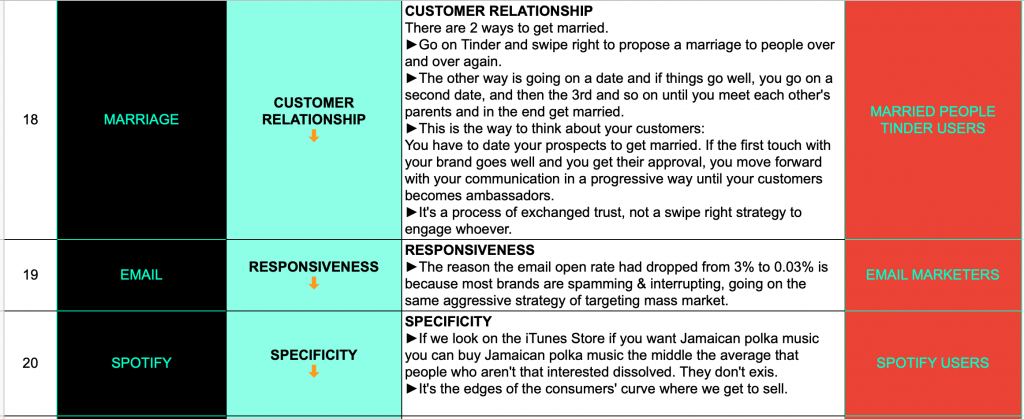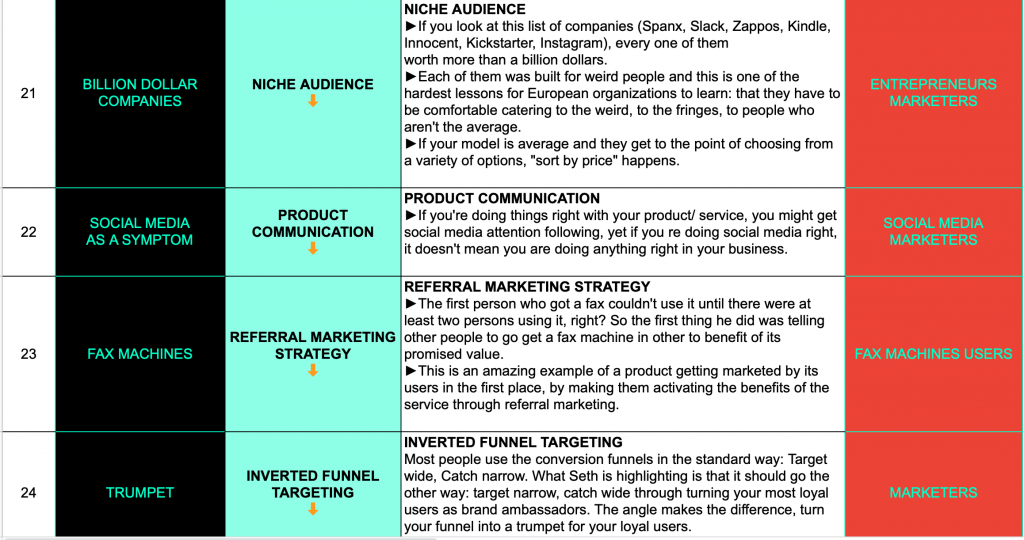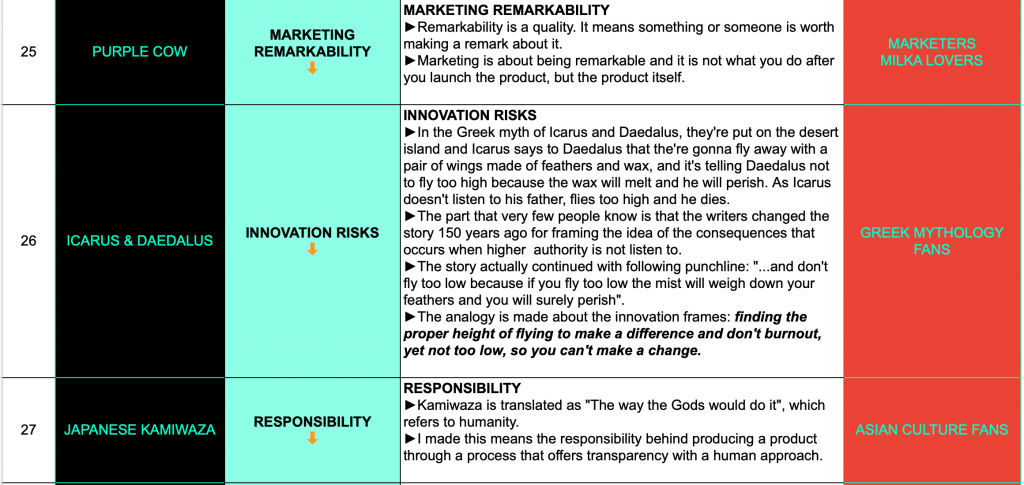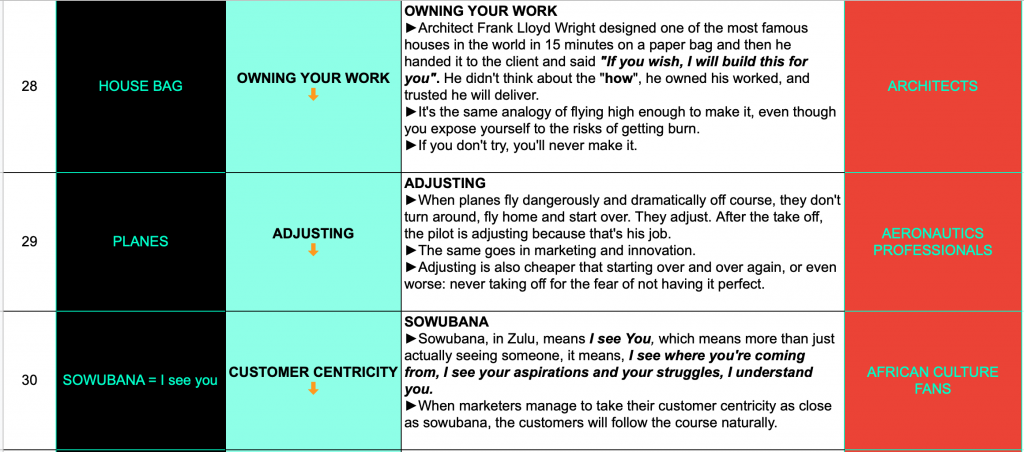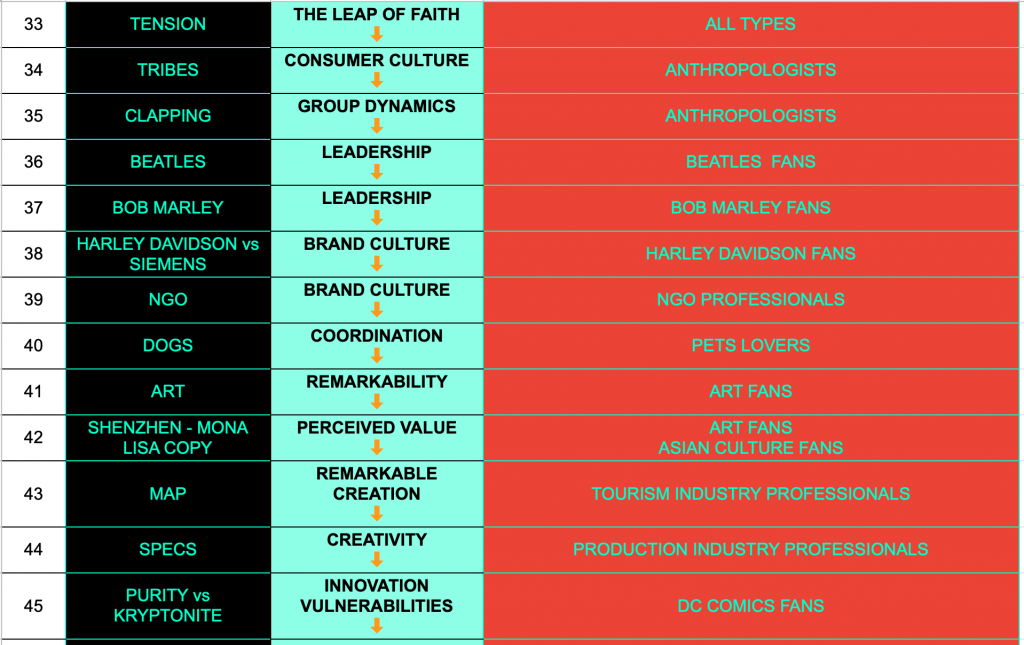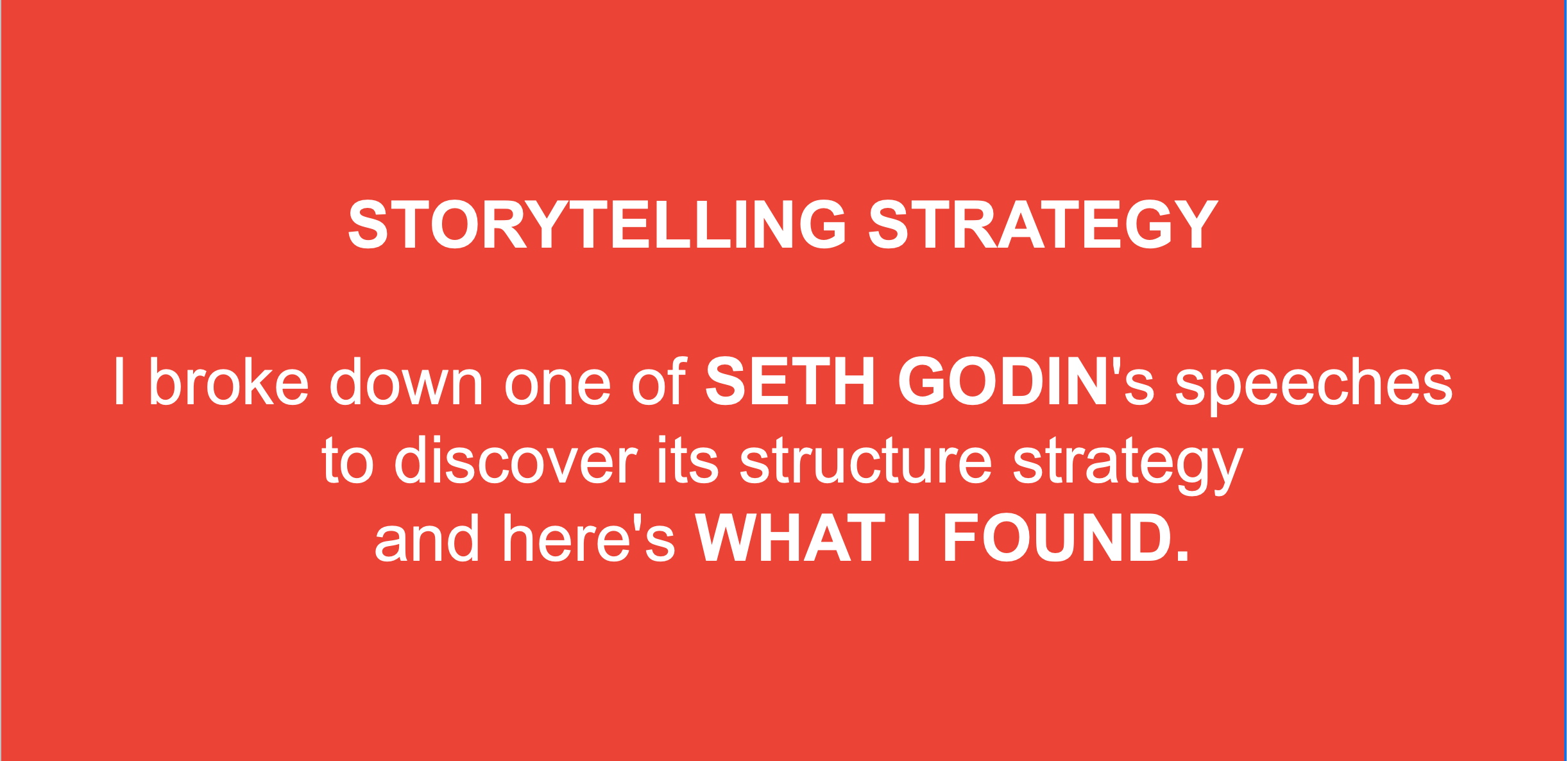
If you ever had the chance of listening to Seth Godin, you know that he has a particular style of hooking one’s attention for the whole length of his storytelling. I had the opportunity of listening to him, both, in a live session (via BRAND MINDS) as well as online, and the effect was just as catchy regardless of the way he delivered the keynote.
These past days, I watched some of his speeches and noticed a pattern that is replicated in most of his public talks. So, what I did was breaking down a 45-minute speech he kept for a conference in 2018, and here are 4 KEYPOINTS that connect throughout his pattern:
1.THE REVERSED TEACHING METHOD.
Most of us were taught by our teachers in school through a standard method that followed 3 simple steps:
MOST TEACHERS IN SCHOOL
- They would first teach the used terms
- Then they would teach the theory
- In the end, they would wrap it all up with examples.
SETH’S REVERSED MODEL IN STORYTELLING
- He would first tell a story (the example);
- He would then pull out the underlining lesson (the theory)
- In the end, he would explain the punchline analogy (the pillars/ terms)
What Seth noticed, while our teachers didn’t is that it’s easier for people to understand a new concept when you give them a story to relate with, than teach them a theory, wait for those synapses in their brain to click, and then deliver an example that coats the whole lesson.
2. RELATABILITY:
THE LARGER IS THE STORYTELLING VARIETY, THE BIGGER THE CHANCES FOR EACH PERSON THAT LISTENS TO RELATE WITH SOMETHING.
Another thing that I noticed in Seth’s pattern is that he always tells stories from a large variety of topics and subjects: business, sports, art, anthropology, music, specific brands, economy, and so on.
When you are speaking to an audience of thousands of people, the more different are the stories that you deliver, the higher the chances that everyone leaves with at least one analogy from your speech: the one that was relatable to him/her.
In translation, his storytelling strategy helps in reaching a large number of people.
3. THE PROGRESSIVE STORYLINE
Even though the stories he tells are different, he sticks with a journey that he builds progressively: Below, in the excel sheet I made, you will notice that he starts with:
- The main character (WORLD CHANGER) that needs a…
- Different mindset to succeed (DIVERGENT THINKING) that he gets through…
- A change in PERSPECTIVE that stands on the foundation of a…
- VISION that is followed by understanding the…
- People it’s made to help (FOCUS TARGET); Then he gets to the next step, which is…
- The product and the importance of QUALITY over QUANTITY…
…and so on.
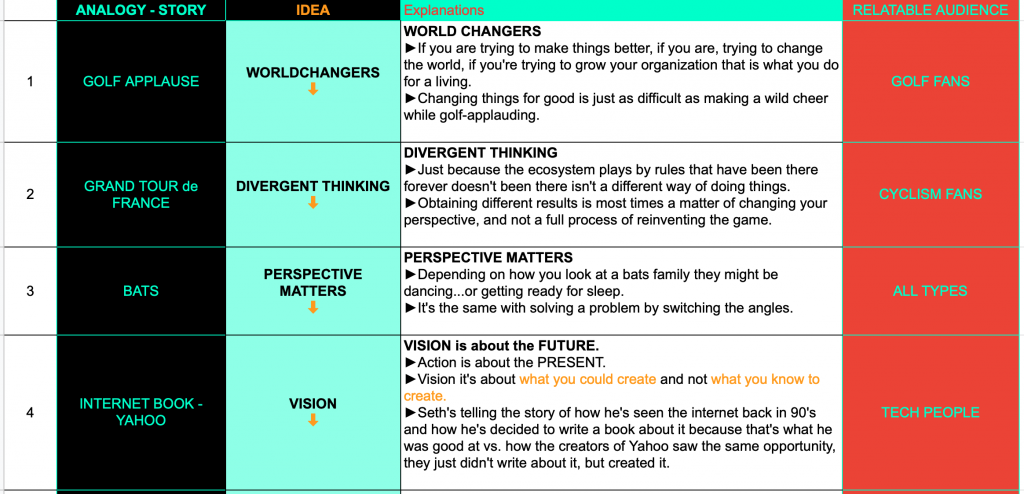
Get a look at the FULL SPEECH ANALYSYS HERE. I’ve also explained 32 of his 50 analogies in his speech. You’ll find the IDEAS that he linked to each of the STORIES and the AUDIENCE that he reached through that particular example.
4. CATCHING THE ATTENTION THROUGH FLUIDITY
What’s sticky about his storytelling and manages to keep our attention engaged for the entire speech length is the fluidity in his stories. All his stories connect through context, the end of one is the beginning of the following which creates the flow. He doesn’t leave his audience the opportunity to drop their attention because if someone does, he or she is losing the red tape.
The fact that all his lessons are related to real-life examples enhances the engaging effect and creates a journey that takes you from a milestone to another.
THE FLAWS
I honestly find his approach genius and the storytelling style addictive at the same time. Yet, nothing’s perfect, right? Nor is Seth’s speeches. The flaw in this particular strategy is THE GRANULARITY.
It’s because his speeches are so puzzled in stories, you can’t always say that you have learned something comprehensive about one particular topic, but more of a bag of takeaways to keep in mind when you face particular situations.
However, there are a lot of insights planted through his stories and some of them might help you connect the dots on some scenarios in your own company that could pull your Eureka moment out on the surface.
Just as Warren Buffet says:
It’s nothing outstanding in finding an great opportunity, it’s only a lot of persistence on following a course of actions, and once in a while, the dots might connect.
Hope you enjoy it!
A.
The full SPEECH ANALYSYS for a better viewing experience: HERE.

